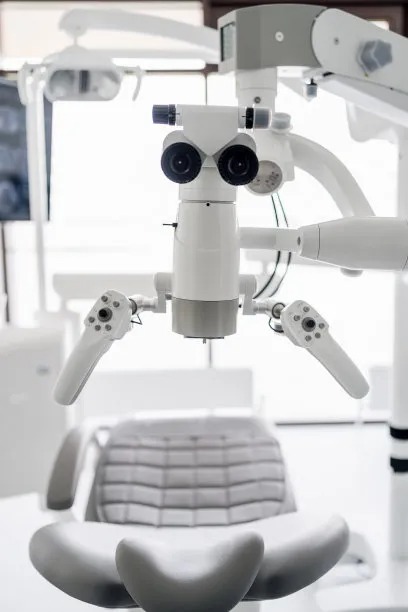The Importance of Proper Techniques When Extracting a Tooth for Effective Dental Health Management
Summary: The article emphasizes the importance of utilizing proper techniques when extracting a tooth to ensure effective dental health management. Tooth extraction is a common dental procedure, and the methodologies employed can significantly impact patient comfort, healing, and overall health. It will explore four critical areas: the significance of pre-extraction assessments, the role of anesthesia and sedation, techniques for minimizing trauma, and aftercare protocols for optimal recovery. Each section will detail how these aspects contribute to successful tooth extraction and long-term dental health.
1. Significance of Pre-Extraction Assessments

Before any tooth extraction procedure, conducting thorough pre-extraction assessments is crucial. These assessments often include reviewing the patients medical history and conducting necessary diagnostic tests, such as X-rays. Identifying existing medical conditions or possible allergies helps mitigate risks during extraction, ensuring a safer experience for the patient.
Furthermore, these evaluations help dentists determine the complexity of the extraction. Some teeth may have deep roots or may be impacted, requiring specialized techniques or referrals to an oral surgeon. By understanding these factors upfront, dentists can better prepare for the procedure, clearly communicating potential complications and setting appropriate patient expectations.
Lastly, a comprehensive assessment fosters patient trust. When patients feel that their dentist is thorough and attentive to their unique needs, they are more likely to have a positive experience and remain compliant with post-extraction care. In the realm of dental health management, patient cooperation is invaluable for successful outcomes.
2. Role of Anesthesia and Sedation
The use of anesthesia and sedation is another essential component of tooth extraction procedures. Administering local anesthesia helps numb the area, minimizing pain during extraction. In cases of extreme anxiety or complicated extractions, sedation methods such as nitrous oxide or intravenous sedation may be employed, allowing patients to relax comfortably throughout the process.
Proper administration of anesthesia not only enhances patient experience but also facilitates the dentists efficiency. When a patient is calm and pain-free, the dentist can focus on executing the extraction with precision, reducing the risk of complications that may arise from sudden movements or discomfort.
Moreover, monitoring the patient’s response to anesthesia is critical. Dentists must be vigilant in observing the patient for any adverse reactions, ensuring immediate actions can be taken if necessary. This attentiveness reinforces the importance of professional expertise and can dramatically influence the overall success of the procedure.
3. Techniques for Minimizing Trauma
Employing proper techniques during the tooth extraction process significantly reduces trauma to surrounding tissues. Strategies such as using gentle, controlled movements help preserve adjacent gum and bone structures, which is crucial for future dental work or natural healing. Careful manipulation can lead to less bleeding and quicker recovery times for patients.
Furthermore, utilizing specialized instruments designed for extraction can contribute to minimizing trauma. For instance, elevators and forceps that are specific to the tooth type and condition allow for greater control and precision. These tools enable the dentist to perform the extraction with reduced risk of fracturing surrounding teeth or damaging the jawbone.
Another technique involves assessing the direction of tooth roots to avoid unnecessary trauma. Dentists who are well-versed in the anatomy of the dental structures will strategize the extraction path, ensuring the process is as smooth as possible. The lower the trauma, the better the prognosis for the patient’s recovery and overall dental health.
4. Aftercare Protocols for Optimal Recovery
Post-extraction care is as essential as the extraction procedure itself. Providing patients with clear and detailed aftercare instructions is vital for promoting healing and preventing complications such as infections or excessive bleeding. Patients should be guided on how to manage pain and swelling, including the use of ice packs and prescribed medications.
Additionally, dietary recommendations post-extraction play a critical role in the recovery phase. Patients are typically advised to consume soft foods and to avoid vigorous mouth movements, which can disrupt the healing site. This tailored approach ensures that the patient is not only comfortable but that the extraction site heals efficiently.
Finally, scheduling follow-up appointments allows for proper monitoring of the healing process. During these visits, dentists can assess the extraction site, address any concerns, and ensure that the patient is on the right track for full recovery. Such diligence not only aids patient recovery but also fosters an ongoing dentist-patient relationship vital for future dental health management.
Summary: Proper techniques in tooth extraction touch various facets of dental health management, illustrating the need for thorough preparation, effective sedation, minimized trauma, and comprehensive aftercare. By concentrating on these areas, dental professionals can enhance patient outcomes significantly.
The focus on effective tooth extraction techniques not only ensures immediate patient comfort but also sets the stage for better long-term dental health. Emphasizing these practices is essential for every dental practitioner.
This article is compiled by Vickong Dental and the content is for reference only



